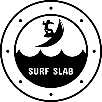On a big day at Fairy Bower near Manly in March 1966, the bravest surfers gather to take advantage of a big autumn swell. A lone surfboat crew dares to take off on a huge wave, beside the surfers. Further north and later in the year, at Noosa Heads in Queensland, a trio of surfing pioneers is working on new boards and new ways of riding them. George Greenough, Bob McTavish and Nat Young are about to change surfing in Australia.
The surf films of the 1950s and 1960s took their stylistic cue partly from American travelogues, in which the narration was meant to be both informative and entertaining. The voice we hear on this clip is that of the director, Bob Evans, a Sydney surfer who had been making surf films since the late 1950s. We can infer from the way he explains the location and the geography of the Australian east coast that he was expecting this film to be shown in the USA. Indeed, High on a Cool Wave appears to be directly targeted at American surfers. Evans tries hard to convince both Australian audiences, and those overseas, that things are changing quickly in Australia.
The style of surfboard, the style of riding, and the style of the surfing film were imported from the USA. The American surf team visited Australia in 1956 for the Olympic Games in Melbourne, bringing with them a new style of board. Most Australians had been riding hollow ‘toothpick’ boards, made by laminating plywood on a frame. These were long and unwieldy and heavy, so most of them were stored in surf clubs, rather than taken home. The Americans brought new solid boards which they called Malibus, after the beach that was the centre of surfing culture in Los Angeles, California. What we see here is ten years later, after Australian surfers had mastered the new boards and begun to develop variations.
One of the most important of these variations was by Brisbane-born surfer Bob McTavish, who had been shaping boards and living a largely nomadic surf lifestyle since 1961. By 1966, he was strongly influenced by the theories of American surfer and fisherman George Greenough, who was a regular visitor to Australia, and would eventually settle on the north coast of NSW. Greenough preferred a scooped-out kneeboard that he called a spoon, but his ideas on fin design, based on the fins of fish and dolphins, had a strong impact on McTavish, who had developed a restless, experimental nature.
This footage comes from July 1966, shortly before Nat Young went to San Diego, California, to compete in the World Championships. His win in that contest established him as a major influence on world surfing, and it was partly his style that was different. The commentary talks about how these three surfers were changing that style, but there was a lot more surfboard development to come. McTavish, now a legendary shaper of Australian surfboards, says that this footage represents the apex of what could be done on a traditional longboard. Everything would soon change, as he started to make his boards shorter and shorter, in an attempt to ‘go vertical’.
One of the interesting things about this clip is the way the music changes, as the location changes to Noosa Heads. The storm sequence in Sydney has more driving rock’n'roll, but switches to cool jazz for the small waves. Jazz had been considered the coolest music in some circles since the late 1950s, but that was about to change, along with everything else. Albie Thoms, in his book Surfmovies: The History of the Surf Film in Australia (2000, Shore Thing Publishing, ISBN 0 9587420 3 0), says that part of the soundtrack was done by the Sydney blues band The Id. The narration was written by photographer-journalist Rennie Ellis, who was Evans’s man in Victoria, roadshowing his films. Evans did most of the shooting himself.
In the Noosa Heads sequence, Nat Young is the taller of the two surfers. In the final shot of this clip, with the two surfers riding simultaneously on different waves, McTavish is in front, Young is at back.








